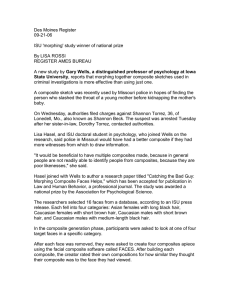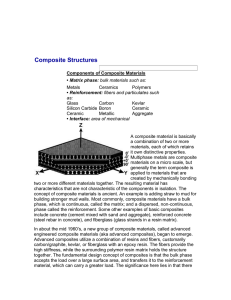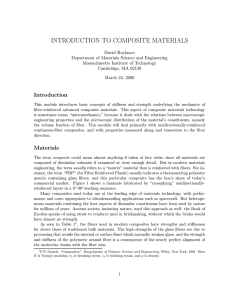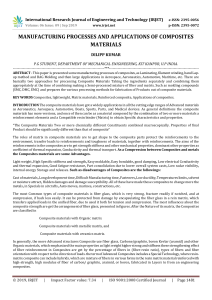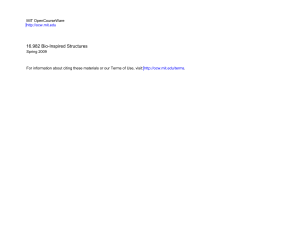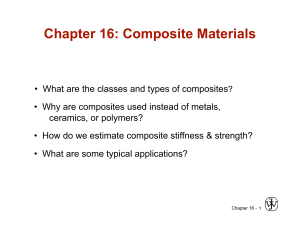User subroutine for compressive failure of composites Kim D. Sørensen
advertisement
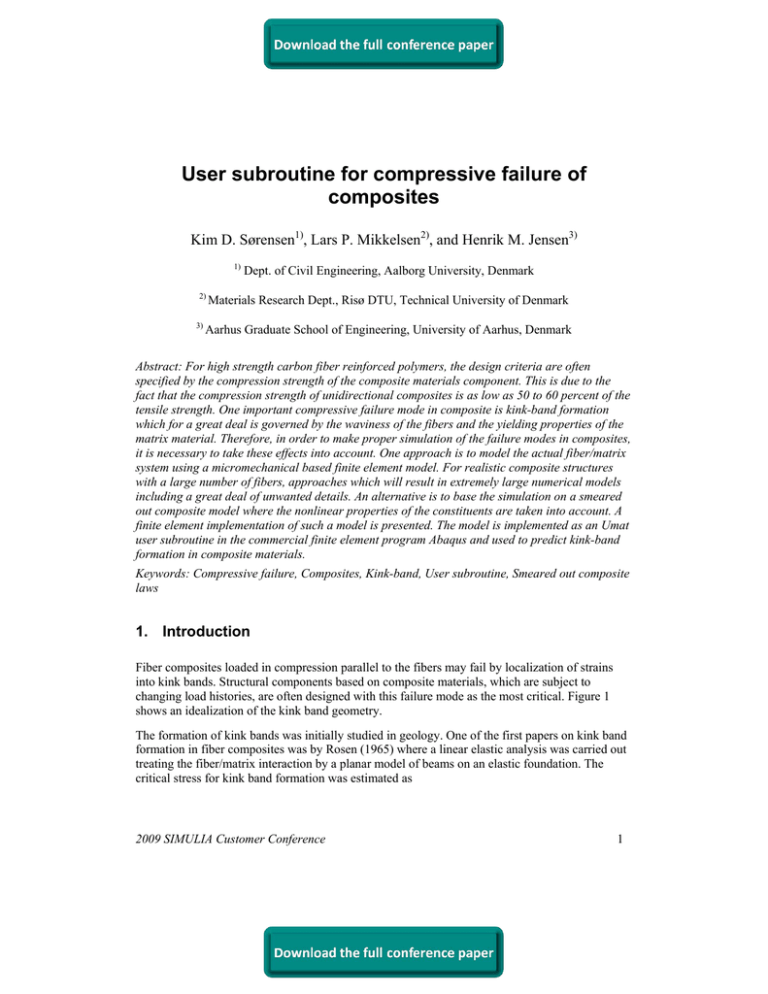
User subroutine for compressive failure of composites Kim D. Sørensen1), Lars P. Mikkelsen2), and Henrik M. Jensen3) 1) 2) 3) Dept. of Civil Engineering, Aalborg University, Denmark Materials Research Dept., Risø DTU, Technical University of Denmark Aarhus Graduate School of Engineering, University of Aarhus, Denmark Abstract: For high strength carbon fiber reinforced polymers, the design criteria are often specified by the compression strength of the composite materials component. This is due to the fact that the compression strength of unidirectional composites is as low as 50 to 60 percent of the tensile strength. One important compressive failure mode in composite is kink-band formation which for a great deal is governed by the waviness of the fibers and the yielding properties of the matrix material. Therefore, in order to make proper simulation of the failure modes in composites, it is necessary to take these effects into account. One approach is to model the actual fiber/matrix system using a micromechanical based finite element model. For realistic composite structures with a large number of fibers, approaches which will result in extremely large numerical models including a great deal of unwanted details. An alternative is to base the simulation on a smeared out composite model where the nonlinear properties of the constituents are taken into account. A finite element implementation of such a model is presented. The model is implemented as an Umat user subroutine in the commercial finite element program Abaqus and used to predict kink-band formation in composite materials. Keywords: Compressive failure, Composites, Kink-band, User subroutine, Smeared out composite laws 1. Introduction Fiber composites loaded in compression parallel to the fibers may fail by localization of strains into kink bands. Structural components based on composite materials, which are subject to changing load histories, are often designed with this failure mode as the most critical. Figure 1 shows an idealization of the kink band geometry. The formation of kink bands was initially studied in geology. One of the first papers on kink band formation in fiber composites was by Rosen (1965) where a linear elastic analysis was carried out treating the fiber/matrix interaction by a planar model of beams on an elastic foundation. The critical stress for kink band formation was estimated as 2009 SIMULIA Customer Conference 1





